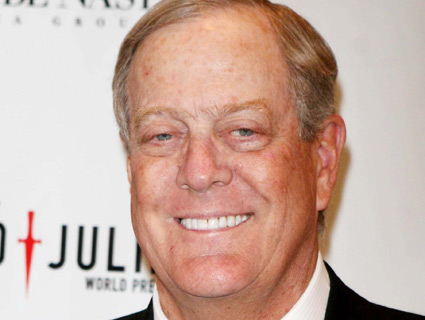
Zuma/Gary Coronado
In the past year, California has experienced the worst whooping cough outbreak in more than 50 years, an epidemic that has killed 10 infants and resulted in 6,400 reported cases. But even as the state’s public health officials have struggled to curb the disease, Republicans in Congress have proposed slashing millions in federal funding for immunization programs. Public health advocates warn that these cuts threaten efforts across the country to prevent and contain infectious and sometimes fatal diseases. And they add that lower vaccination rates could eventually result in more outbreaks that endanger public health at a major cost to taxpayers.
The House GOP’s 2011 budget would chop $156 million from the Centers for Disease Control’s funding for immunization and respiratory diseases. The GOP reductions are likely to hit the CDC’s support for state and local immunization programs, the agency’s ability to evaluate which vaccines are working, and its work to educate the public about recommended vaccines for children, teenagers, and other susceptible populations. The CDC especially focuses on serving lower-income families who receive vaccines at state and local health offices and community health clinics, rather than a private doctor’s office.
“When there’s less money, fewer kids get vaccinated,” says Dr. Georges Benjamin, executive director of the American Public Health Association, which is currently lobbying against the proposed budget reductions. And, Benjamin adds, the GOP cuts could end up making vaccines make less readily available at a time when both the cost and quantity of recommended vaccines are going up. Children of the working poor who don’t qualify for Medicaid may have a harder time getting vaccinated against measles or the flu. Public health officials “may not be able to purchase enough vaccines for the whole population…You will have to pick and choose,” says Amy Pisani, executive director of Every Child By Two, an immunization advocacy group.
What’s more, proposed funding cutbacks could make it more difficult for public health officials and advocates to get the word out to both doctors and patients about the vaccines that certain at-risk groups should be receiving, according to Len Novick, executive director of the National Foundation for Infectious Diseases, a public health non-profit. Smokers might not be aware that they should receive a pneumococcal vaccine, and senior citizens that they should get vaccinated against shingles, according to new recommendations from the CDC. And the reductions could also undercut the federal agency’s efforts to educate lower-income, uninsured communities about which vaccines they should be receiving. “When parents lose their jobs and their health-care, they don’t always know where to go for freebies,” says Catherine Martin, executive director of the California Immunization Coalition, a state-based advocacy group.
Health advocates tout vaccines as one of the most cost-effective preventive health strategies, warning that pinching pennies to achieve short-term cost savings could end up costing taxpayers plenty more down the road. A 2008 outbreak of measles in San Diego ended up costing $179,0000 to manage—at a cost of over $10,000 per case—and a similar outbreak in Iowa a few years earlier cost some $150,000, according to a CDC report.
Advocates warn that cutting back on vaccine education and availability could help increase the likelihood of future outbreaks of such diseases—and reduce the government’s ability to respond effectively to contain such outbreaks when they occur. “It’s false savings,” concludes APHA’s Benjamin. While other public health experts argue the impact of such cutbacks might not be immediately apparent, there could be risks down the road if funding for vaccines is undermined. “In the short term, you’re not going to see a difference, but [the question is] whether in three to five years, we’re going to maintain our high immunization levels,” says Dr. William Schaffner, chair of Vanderbilt University’s preventive medicine department and an advisor to the CDC.
The proposed federal cuts also come at a time when many cash-strapped states have already made major reductions to public health programs. Despite California’s alarming whooping cough epidemic, the Schwarzenegger administration cut $18 million from its immunization programs last fall, eliminating all assistance from for] local programs. The reduction slashed money for community clinics serving rural, low-income, and non-English-speaking populations. It also targeted an online database that helped hospitals and schools keep track of children’s immunization records and slashed support for administrating flu vaccines for the poor seniors and school children. “We’ve already taken a huge hit,” says Martin of the California Immunization Coalition.
Public health advocates say they’re grateful, at least, that there’s still federal funding for vaccines that won’t be subject to the whims of the current budget debate. Federal health reform has awarded some $100 million in grants for preventative health efforts, including immunization programs. And many of the nation’s poorest children will continue to receive free vaccines through a federal entitlement program that won’t be affected by the budget battle.
That said, the CDC is already bracing itself for the buzz saw. “In the rank and file, they are very aware that budget cuts are likely, and they’re making plans,” says Vanderbilt’s Schaffner. Like other federal agencies targeted for cuts, the CDC has already begun to pare back its activities. Days ago, the CDC cancelled its annual immunology conference. But the worst is likely still ahead. “We’re already starting to feel the chilling effects,” says Novick of the National Foundation for Infectious Diseases.











